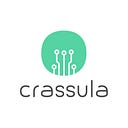Open banking implies a secure form of releasing the bank’s data — a free access and easy sharing of the information to third parties. Of course, this raises some concerns about the accessibility of private information. We are here to explain — open banking is a safe experience and there is nothing to worry about. Here’s why:
- Looking at the technical part, open banking is just the same as online banking, which is pretty familiar to everyone nowadays. The technology used to transfer the data, called APIs, contains a thorough verification of both user and service identities, implementing a strong and secure authentication process.
- All FinTechs that are planning to make an Open Banking project first have to undergo a tight checkup. Only companies that are approved by authorities are able to implement the system.
- Open Banking system does not mean that users MUST share their data — it is all optional. The only entity that will have access to such information is their bank.
What’s good about open banking? It is definitely a disruptive innovation that will potentially change the whole process of banking as we know it now. Open banking is the beginning of an acceleration of digital-only banks, or neobanks, — financial services that are operated by intelligent software.
This neobank disruption will improve global money movement. It gives financial institutions an opportunity to transform their legacy and challenge the business. Many Open Banking projects are still in a development phase, but more and more startups are applying to get relevant licenses and security checkups by authorities. One of the hottest projects launching this year is Crassula Banking — an open banking solution allowing businesses to embed the services into their company’s system fast and easy.
More about the project: crassula.io
